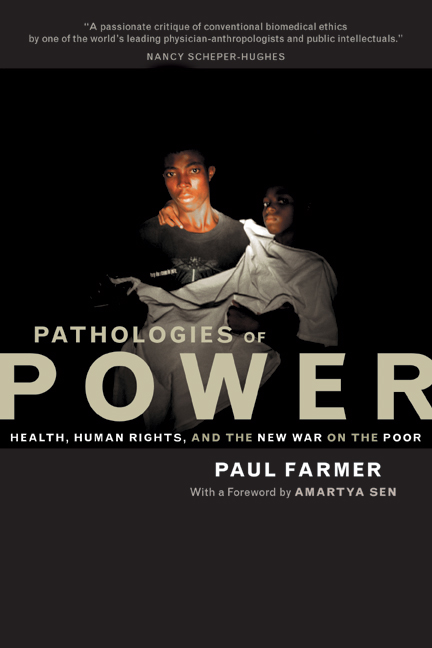Structural violence can be referred to as a form of violence where some social structures or social institutions may harm people by preventing them from meeting their basic needs. In “On Suffering and Structural Violence”, Paul Farmer discusses the case of the violent impact of social structures and institutions on the lives of the people of Haiti.
Through his write up, Farmer shows that Institutionalized elitism, ethnocentrism, classism, racism, exism, adultism, nationalism, hetero-sexism and ageism are some of the examples of structural violence; as also proposed by Galtung (1969). The results of all these examples mentioned above are poverty, suffering and death and this is the kind of normal life of the Haitian people.
In their bid to chalk some successes, governments of especially developing nations embark on projects that go a long way to worsen the living conditions of their people. So that, even though, a country might be known by the international economic standard as developing or developed, the greater number of its people might be suffering from extreme underdeveloped conditions. This comes about as a result of the fact that a few wealthy people might be contributing their quota to the larger economic world, of course, as always, at the expense of the many poor and tattered ones.
Drawing on the building of Haiti’s largest dam and its effects on the lives of the Kay community people, we can say that their suffering today is as a result of the dam that was built many years before. Farmer writes that before the dam was built at the original location of the Kay community, for generations, thousands of families had farmed the broad and gently sloping banks of the river, selling rice, bananas, millet, including all kinds of crops in regional markets. (2006).
This means that life was as good as could be for the people since they had a source of income and better places of abode; at least, until the building of the dam. This dam which was supposed to provide the people with electricity and good source of drinking water rather rendered them homeless, hungry, and eternally unhealthy. Meanwhile, this same dam would have been fulfilling its promises of luxury and comfort to others living in the city.
Paul Farmer also uses the life and death of Acephie to show how women are forced into sexual choices due to poverty. These choices result in diseases and deaths as in Acephie’s case in which she contracted HIV/AIDS because she entered into a relationship with Captain Honorat, an HIV carrier and soldier. In the end, Acephie also infected her unborn child and another man; and so the chain goes on and on until it becomes a pandemic. This is the reason Paul Farmer is saying that poverty, suffering and death are a result of social structures and social institutions; that these structures, due to their institutionalized nature, most of which are a residue of colonialism, has made it difficult to address the issue of poverty.
In conclusion, I will say that the increased rate of poverty, sicknesses and deaths of those who occupy the bottom ranks of society, as against those who are above them, who experience a relatively lower death rate, can be attributed to the stress, shame, discrimination and denigration that results from structural violence. Until these structures are exposed and dealt with appropriately, economic development would not be a true representation of a nation’s peoples.
REFERENCES
Farmer, P. (2006) Social Medicine. Structural Violence and Clinical Medicine. UN Press Release.
Galtung, J. (1969) Cultural Violence. Journal of Peace Research. University of California Press.

